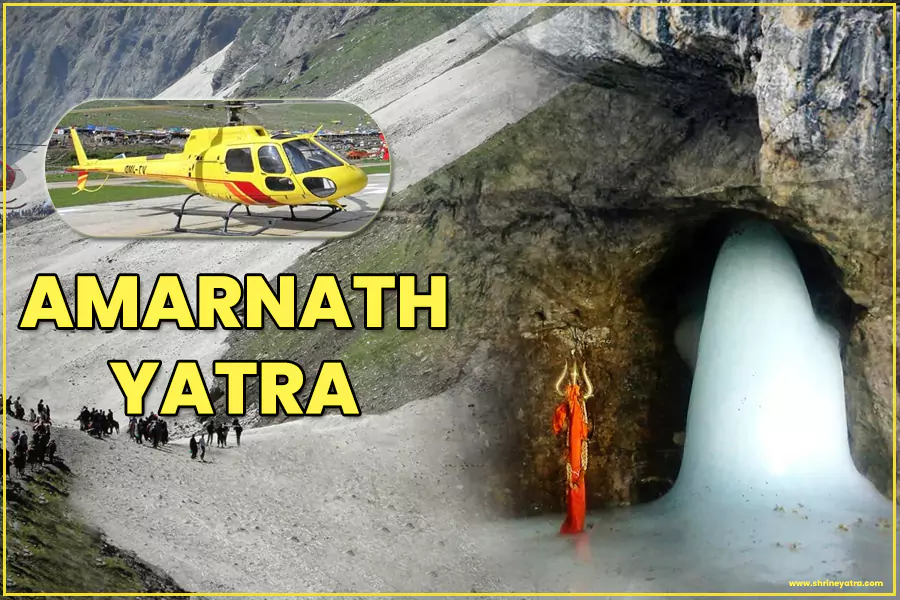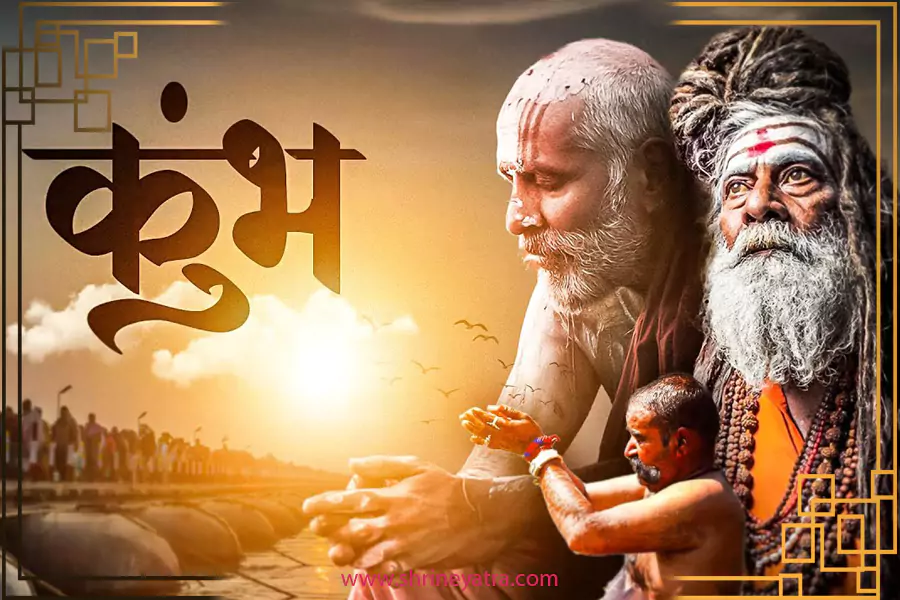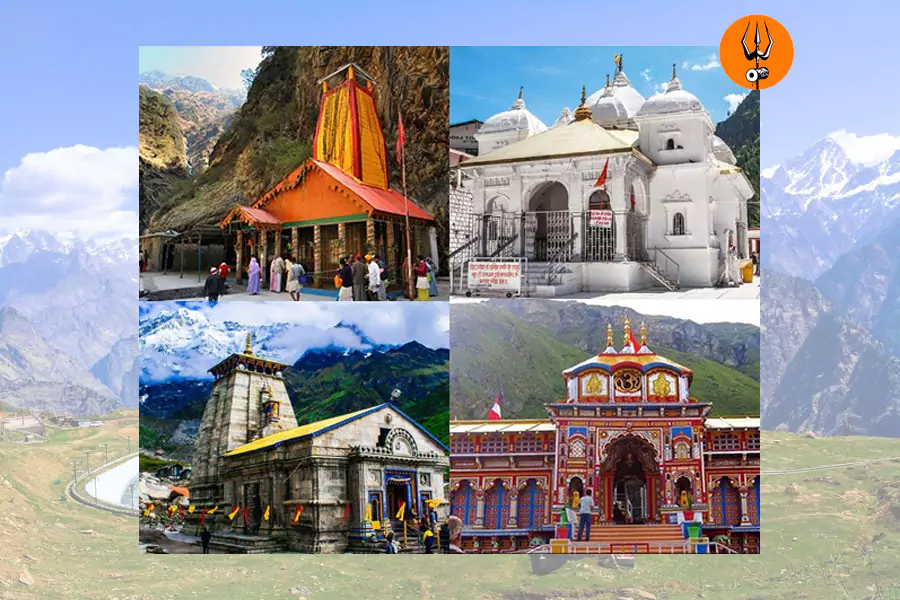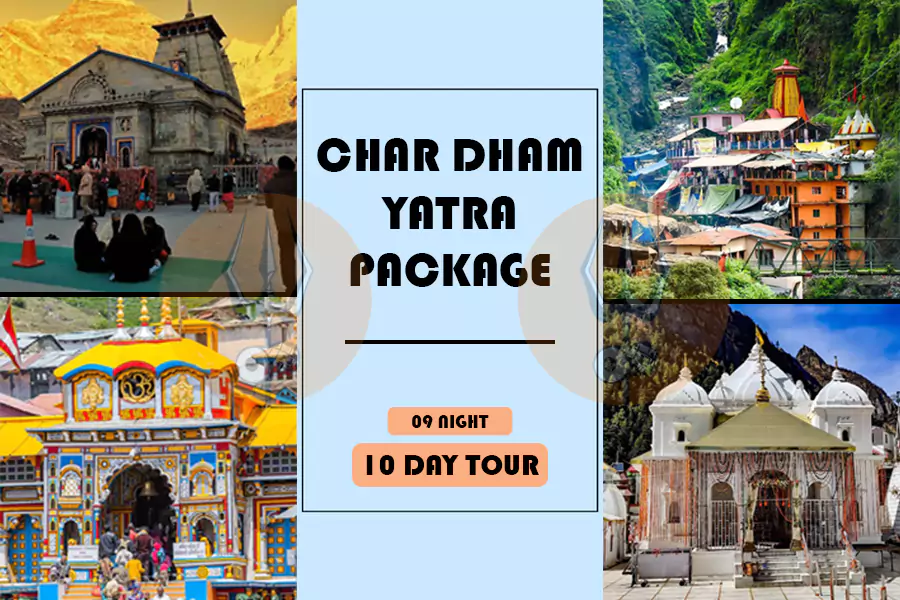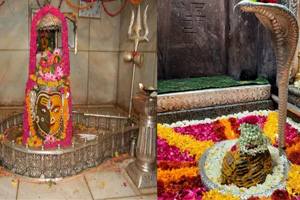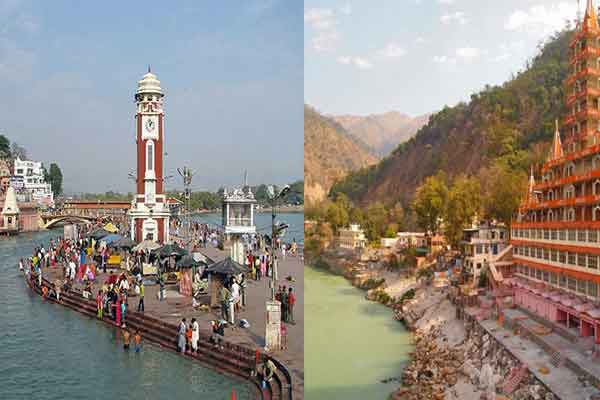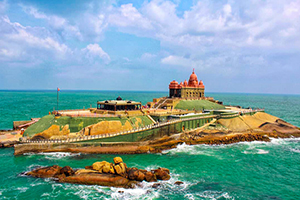Famous Shiva temples in South India
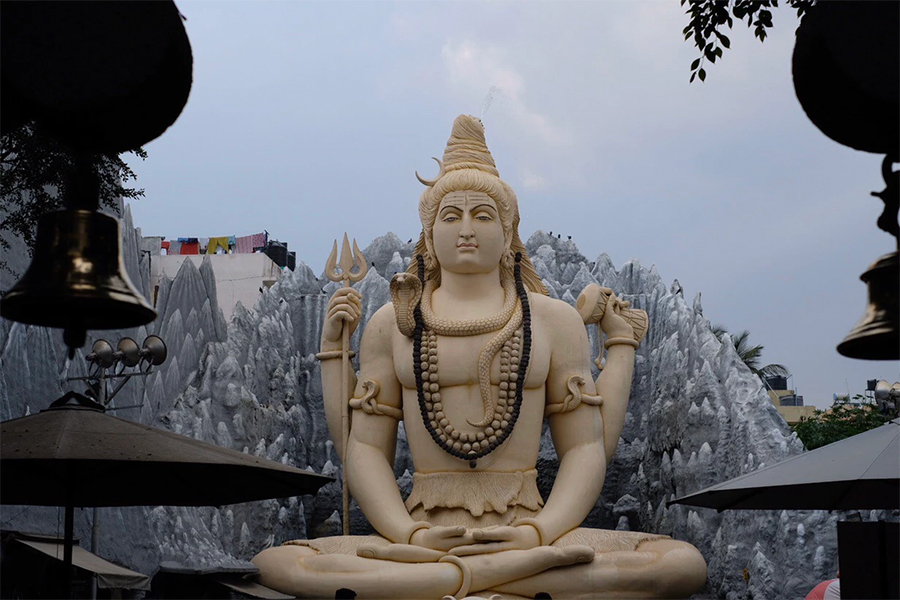
The temples of Lord Shiva in South India are the most impressive monuments that were ever built. Generations of dynasties like the Cholas, Pallavas, and Chalukyas ruled over South India and built these temples in devotion to Lord Shiva, the supreme of all the Hindu gods. The main feature that strikes you is the magnificent architecture of these temples. Some of these temples are among the 12 Jyotirlingas in India. They may be old, but even today, these Shiva temples are major tourist attractions in South Indian states. These temples can be found in Andhra Pradesh, Karnataka, Kerala, and Tamil Nadu. You can include them in your South India tour itinerary.
Read more: Char Dham Tour Packages
1. Mallikarjuna Swamy Temple, Srisailam

Mallikarjuna Swamy Temple is one of the Famous 12 Jyotirlinga Temples in South India. This Shiva temple is situated on the banks of the Krishna river in the small town of Srisailam in Andhra Pradesh. Another interesting thing about this temple is that it is also one of the 18 Shakti Peeth of the goddess Sati. Lord Shiva is worshipped in the incarnation of Mallikarjuna and Parvati is in the form of Bhramaramba. Archaeological records and inscriptions date the temple back to the 2nd century.
Read more: Uttarakhand Tour Packages
The temple was present during the reign of the Satavahana dynasty. The kings of the Vijayanagar Empire and Chhatrapati Shivaji Maharaj added many structures like the mandapa much later in history. The temple is on Nallamalai Hills, which provides a scenic background to the temple.
- Festivals: Mahashivratri, Ugadi, Kartheekai Mahothsavam, Sravanamahothsavam
- Special rituals: Rudra Homam, Sahasralingam Abhishekam, Kumkuma Pooja
- Best time to visit: October to March
- Darshan Timings: 4:30 am to 10 pm
- Aarti Timings: 5:30 am / 5 pm
2. Ramanathaswamy Temple, Rameswaram
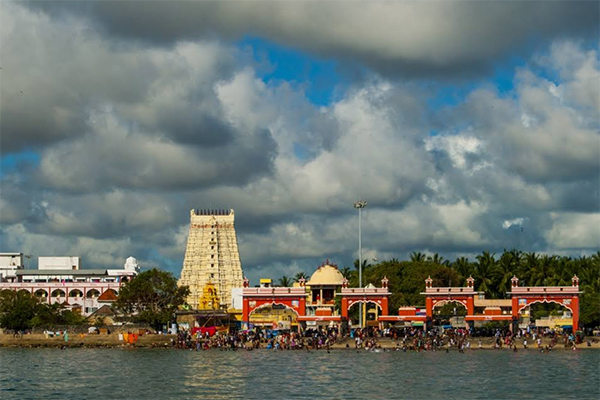
One of the most beautiful Shiva temples in South India exists on the island of Rameswaram and it is none other than Ramanathaswamy Temple. The temple is one of the most important Shiva temples in India. It also counts as one of the Char Dham Yatra pilgrimage places in India. This is also one of the 12 Jyotirlinga temples in South India. One of the most striking things about Ramanathaswamy Temple is the long corridors which are the longest corridors among all the Hindu temples in India. Another is that there are two lingas in the temple. One was made by Rama from sand, and the other was brought by Lord Hanuman and from Mount Kailash. The gopurams or towers are another beautiful architectural feature of this temple.
Read More: Tamil Nadu Tour PackagesAccording to Ramayana, Lord Ram himself established and worshipped the linga. The present-day structure of the temple was made in the 17th century. Later, many kings from other dynasties added to the existing structure of the temple. Lord Shiva is worshipped here in the form of Ramanathaswamy. The water bodies of this temple are the most important places to bathe and there are 22 such water tanks. 22 is also the number of arrows that Lord Ram carried with him in his quiver.
- Festivals: Mahashivratri, Ramalinga Prathishtai, Aarudhira Dharshan, Navratri, Dussehra, Thirukalyanam
- Special rituals: Rudrabhisek, Laghurudrabhisek, Gangabishekam, Palliyarai Pooja
- Best time to visit: October to March
- Darshan Timings: 6 am to 9 pm
3. Brihadeswarar Temple, Thanjavur
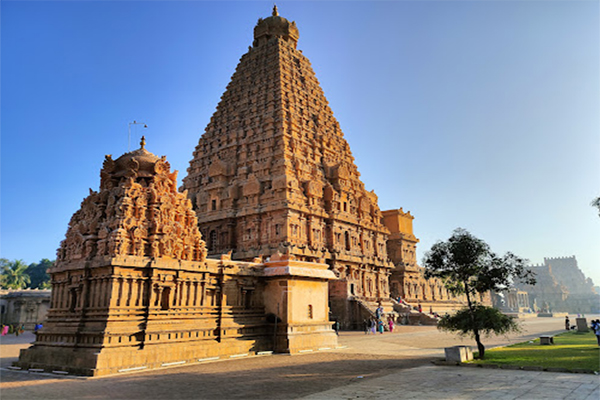
Brihadeswarar Temple ranks among the best temples of Lord Shiva that were ever built. The temple is a masterpiece of temple architecture and is designated as a UNESCO World Heritage Site. The temple is the biggest temple that was built by the Chola dynasty. A king called Rajaraja built the temple in 1003 AD. The temple is known as Dakshin Meru or ‘Mount Meru of the South’. The most impressive thing about this temple is the Vimana or tower which is the tallest vimana in South India. The sculpture of Nataraja, or the dancing form of Lord Shiva, is spectacular. There are many deities of Hindu gods and goddesses in this temple such as Parvati, Nandi, Murugan, and others. The temple has spectacular carvings on its gopurams, mandapas, walls, ceiling, and pillars. There are various inscriptions in Tamil script. The temple celebrates various religious and cultural festivals.
- Festivals: Navratri, Aipasi, Brahmotsavam, Shivratri
- Special rituals: Panchami Abhishekam, Pradosham
- Best time to visit: October to March
- Darshan Timings: 6 am to 12:10 pm / 4 pm to 9 pm
- Pooja Timings: 8:30 am, 12 noon, 5:30 pm, 8:30 pm
4. Shore Temple, Mahabalipuram
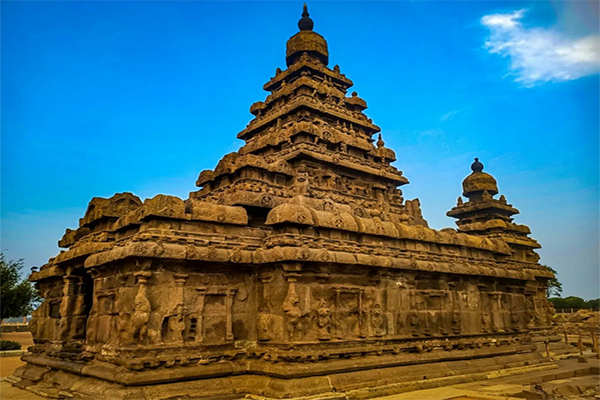
Shore Temple in Mahabalipuram is not a single temple, but an entire temple complex. The temple complex is collectively called Shore Temple as they are on the shores of the Bay of Bengal. The temples are not those where you can do puja, but these are ancient ruins of what once was one of the most magnificent temples in India. The entire temple complex is shaped like a chariot and resembles Dharmaraja Ratha. The main temple is a Shiva temple, and other shrines are that of Lord Vishnu. The Shore Temple is one of the finest examples of structural temples. These temples were made of huge granite stones and not like the rock-cut temples of ancient times. The Shore Temples were built under the reign of the Pallava dynasty during the 7th century.
The site in which these temples were built was a prosperous seaport. These temples have the most elegant architecture and sculptures. Today this is a UNESCO World Heritage Site. The main temples are shaped like a pagoda and these pyramid-like structures were famous in ancient times. The walls, pillars, carvings, entrances, and sanctums have intricate carvings and sculptures on stone.
- Festivals: Mamallapuram Dance Festival
- Best time to visit: October to March, January to February
- Timings: 8 am to 6 pm
5. Meenakshi Sundareswarara Temple, Madurai

Madurai is a temple city and one of the most marvelous temples in Madurai is the Arulmigu Meenakshi Amman Temple also called Meenakshi Sundareshwarar Temple. The main deity of this temple is Meenakshi Devi who is considered to be a divine incarnation of Goddess Parvati. Lord Vishnu is worshipped in the form of Lord Sundareswarara. According to mythology, the temple is the place where Sundareswarara wed Meenakshi, and Lord Vishnu, who was the brother of Meenakshi gave her hand in marriage to Lord Shiva. The Pandayan king called Sadayavarman Kulasekaran I who ruled from 1190 to 1205 AD built Meenakshi Sundareshwarar Temple. The temple is famous for its gopurams (temple towers), spacious halls, sculptures, carvings, and temple architecture.
There are gardens, water fountains, mandapa halls, water pools, and corridors in this temple. The carvings and sculptures on the pillars, walls, and ceilings are breathtaking works of artisans of the olden days. This is one of the most magnificent temples you can visit in South India. The pujaris in Meenakshi Amman Temple still perform pujas daily and religious festivals are celebrated with great festivities and cultural events.
- Festivals: Meenakshi Thirukalyanam, Vasantham festival, Navrathri, Unjal Festival
- Best time to visit: December to February
- Darshan timings: 5 am to 12.30 pm, 4 pm to 9.30 pm
- Puja timings: 5 am to 11.15 am, 4.30 pm to 8.30 pm
Read more: Amarnath Tour Packages
6. Srikalahasteeswara Temple, Srikalahasti

Srikalahasteeswara Temple is a very famous Shiva temple, which is mentioned even in the ancient Puranas. The temple is one of the Pancha Bhoota Stalam where Lord Shiva is manifested in one of the five elements of nature, which is air or vayu. The temple is one among the 275 temples that are included in the Paadal Petra Sthalam or the greatest Shiva temples in the continent. There are many mythological legends associated with this temple. The most famous one is where Vayu or the wind god meditated here for centuries. This is the reason why the shiva linga in this temple is also called Vayu Linga. Lord Brahma is said to have meditated here in all four Yugas. Kannappa who was a king and a devotee of Lord Shiva tried to offer his eyes to the shiv linga here.
The temple was built around the 5th century and successive rulers rebuilt and expanded the temple. The carvings and architecture of this temple are one of the finest in South Indian temples. Lord Shiva is worshipped here in the form of Kalahasteeswara. It is believed that the temple was carved out of a hill. There are many shrines in this temple and many deities are worshipped here. The temple is so sacred that it is also referred to as Dakshina Kailasam or the Kailash of the South. The temple is famous for its Rahu-Ketu pooja, which removes the negative effects of Rahu and Ketu from one’s life.
- Festivals: Maha Shivratri, Aadi Krithika festival, Kedaari Gowri Vratham, Unjal Seva, Nandi Seva
- Special Puja: Rahu-Ketu Puja, Gomatha Pooja, Kaal Sarp Nirvana Puja, Panchakarpur, Rudra Abhishekam.
- Best time to visit: November to February
- Temple timings: 6 am to 9 pm
7. Annamalaiyar Temple, Thiruvannamalai

In the town of Thiruvannamalai, the Annamalaiyar Temple is the most famous Shiva temple. The temple is also called Arunachalesvara Temple as it is at the base of Arunachala Hills. This is one of the Pancha Bhoota Stalas where Shiva is manifested in the natural element which is fire or Agni. The lingam is also called Agni Lingam and Lord Shiva is worshipped here as Arunachalesvara. The temple complex of Annamalaiyar Temple is situated is one of the largest temple complexes in India. The temple also has the tallest gopurams in India, and it has a height of 66 meters or 11 storeys high. The main deities of this temple are Arunachalesvara and Unnamalai Amman. There are many legends from Hindu mythology that mention the temple.
The temple has one of the best temple architecture. The enormous halls or mandapams, carvings on pillars, delicately sculpted idols on the walls, and carved doors, are masterpieces in Dravidian architecture. The temple is famous for its elaborate rituals and festivals which are celebrated throughout the year. Over 3 billion pilgrims visit the temple during November and December and take part in the circumambulation of Arunachala Hills.
- Festivals: Brahmotsavams, Kartikai Deepam festival, Arudra Darisanam, Tai Poosam festival, Parivettai festival
- Special Puja: Panchamoorthigal Abishekam, Kiruthigai Pooja
- Best time to visit: October to March
- Temple timings: 5 am to 12.30 pm, 3.30 pm to 9.30 pm
8. Thillai Nataraja Temple, Chidambaram

Thillai Nataraja Temple in Chidambaram is also called Chidambaram Nataraja Temple. The main deity of this temple is Nataraja. This divine form of Lord Shiva comes from the dance that he performs. Hence Lord Shiva is also called the God of Dance or Nataraja. Thillai Nataraja Temple is one of the famous temples of Lord Shiva in South India. The walls of the temple depict dance postures from Indian classical dances such as Bharatnatyam. The classical arts of India that were developed by ancient rishis and sages called Natya Shastra also features in the temple walls. Thillai Nataraja Temple is a rare type of temple because the jewel-studded idol of Nataraja is worshipped here rather than the shiva linga.
Thillai Nataraja Temple was built in the 10th century and is one of the finest examples of Chola architecture. Lord Shiva is shown performing the Ananda Tandava dance. Along with Lord Shiva, Surya, Ganesha, Vishnu, and Murugan, are also worshipped in this temple. The artwork on the gopurams, carved pillars, expansive halls, long corridors, and huge courtyards, are among the finest in the temples of South India. The temple is a sacred center for followers of Devi (Shakti), Vishnu (Vaishnavism), and Shiva (Shaivism). The halls in this temple have exquisite carvings on pillars and ceilings. Pujas go on during the entire day, and the temple pujaris and devotees perform rituals throughout the year.
- Festivals: Chidamabaram Temple car festival, Marghazhi Thiruvaadhirai, Aani Thirumanjanam
- Special Pujas: Abhishekham, Maha Aarti
- Darshan timings: 6 am to 12 noon, 5 pm to 10 pm.
- Best time to visit: October to March
9. Vadakkunnathan Temple, Thrissur

One of the most famous temples in the state of Kerala is Vadakkunnathan Temple. The temple is in the city of Thrissur. The temple has several mythological legends behind it. According to one legend, this is the very first temple out of the 108 Shiva temples that Lord Parshurama made during his lifetime. Adi Shankaracharya attained freedom from embodiment or videha Mukti at this temple. The temple is famous for its murals and paintings that show scenes from the Mahabharata epic. Vadakkunnathan Temple is one of the most ancient temples enlisted by UNESCO as a World Heritage Site in Kerala.
Read More: Kerala Travel PackagesSome believe that the temple existed even before the 2nd century. Huge stone walls surround the temple and its architecture is a classic Kerala style of architecture. The main temple structure is surrounded by gopurams on all four sides of the temple. There are three main deities in this temple, and they are Vadakkunnathan (Lord Shiva), Lord Rama, and Shankaranarayana. There are massive dance halls in the temple and they are as old as the 7th century. The shiv linga in this temple is not visible. What is visible, is the 16-foot high mound of ghee, with gold on top and three serpents guarding it. The ghee is here for centuries and does not emit any foul odor. Thrissur Pooram is the most famous festival which is celebrated in this temple.
- Festivals: Thrissur Pooram, Aanayoottu, Maha Shivaratri
- Darshan Timings: 4 am to 10 am, 4.30 pm to 8.20 pm
- Best time to visit: April to May
- Special Pujas: Abhishekam, Pradakshina, Trippuka
10. Mahabaleshwar Temple, Gokarna

Considered to be one of the holiest temples of Lord Shiva, the Mahabaleshwar Temple is in the beach town of Gokarna. The temple is right on the shores of the Arabian Sea and is near the city of Karwar. Many legends from Hindu mythology connect this temple with the mythical tales of Hindu gods and demons. The temple finds mention in ancient Hindu texts like Puranas, Ramayana, and Mahabharata. Works of the great poet Kalidasa also mention this famous temple. King Mayurasharma is believed to have built the original structure of the temple in the 4th century.
Read More: Karnataka Tour PackagesMahabaleshwar Temple is one of the temples that is also included in the seven Muktikshetras in Karnataka. The temple is so sacred that even a glimpse of the temple fulfills the wishes of its devotees. The legend of Ravana is very closely linked to this temple. The temple has typical Dravidian architecture. The carvings on the walls, inner sanctums, pillars, and ceilings are fabulous works of artisans. The temple is unique as devotees can touch the shiv linga and do puja. In other Shiva temples in South India, only the high priests are allowed to do the puja and touch the shiv linga. However, non-Hindus and Hindus of western origin are not allowed to enter the sanctum or see the shiv linga.
- Festivals: Mahashivrathri, Chariot Festival, Vijayadashami, Kadiru Haranotsava, Tripurakhya Deepotsava
- Special Pujas: Rudra Homam, Ashttotara Bilvarchana, Maha Panchamrutabhisheka Pooja, Navadhanya Abhishek Pooja
- Best time to visit: October to March
- Darshan timings: 6 am to 12.30 pm, 5 pm to 8 pm
11. Jambukeswarar Temple, Tiruchirappalli

The Jambukeshwarar Temple in Tiruchirappalli is one of the five Pancha Bhoota Sthalam. Lord Shiva is believed to have manifested here in the form of water. This temple is one of the major Shiva temples in Tamil Nadu. It is also one of the 275 Paadal Petra Sthalams. The amazing thing about this temple is that the water stream which flows beneath the lingam never dries out. The mythological legends from sacred Hindu scriptures have added to the charm of this temple. It is said that in mythological times, Parvati herself established the lingam here out of water. Because of this mythological importance, the temple priest dresses as a woman and performs the pooja of Lord Jambukeswarar.
The temple is one of the most fascinating architectural feats of the Chola empire. There are massive halls with sculptured pillars and the gopuras have amazing carvings of Hindu deities. There are huge water tanks that are fed by subterranean springs. You will find inscriptions engraved on stone walls here. The gateways to this temple also have some incredible carvings. Jambukeswara is the main deity of this temple. The temple is also considered to be the abode of Parvati, who is known by her incarnation of Akilandeswari. The temple is famous for its cultural dance festival called Natyanjali. This temple also imparts training to young students in Nadhaswaram, which is a type of wind instrument in Tamil Nadu.
- Festivals: Panguni Brahmmotsavam, Navarathri, Vasantha Urchavam, Thai Poosam, Thai Theppam
- Special Puja: Rudrabhishekam
- Darshan Timings: 6 am to 1 pm, 4 pm to 9 pm
- Best time to visit: November to March
12. Ettumanoor Mahadeva Temple, Kottayam

Kerala has some wonderful Shiva temples and one of the most famous among them is the Ettumanoor Mahadeva Temple. The temple is just 12 km from Kottayam. This temple is famous for its mural paintings and sculptures. The Dravidian-style paintings and frescoes are adorned on the walls of the temple. The most famous is the Nataraja or the Cosmic dance of Shiva. This painting is considered to be so beautiful that it is ranked among the finest wall paintings in India. The temple is one of the masterpieces of engineering and architecture. Wooden sculptures, statues, and roofs are fine examples of traditional Indian architectural sciences. There are wooden as well as stone sculptures here with the finest details. On the temple premises, there are other shrines of Dakshinamurthy, Ganapathy, Yakshi, Bhagavathi, and other deities. The famous Indian poet-saint Adi Shankaracharya composed the 'Soundarya Lahari' in this temple.
The temple is famous for its grand festivals which are celebrated on a large scale. In one such festival called Ezhara Ponnana, eight gold-plated elephant statues are taken out only once a year and kept for public darshan in the open.
- Festivals: Ezharaponnana Ezhunallathu Festival, Shivrathri
- Darshan timings: 4 am to 12.30 pm, 5 pm to 8 pm
- Best time to visit: February, March
13. Murudeshwar Shiva Temple, Murudeshwara

Murudeshwar Shiva Temple is not only one of the most sacred Shiva temples but is also one with the most scenic views. Being built near the Arabian seashore, the temple offers scenic views of the Arabian Sea. Many things are famous about Murudeshwar Temple. One is that the temple has the world’s second-largest Shiva statue. Second is that the gopuram is 20 storey high from which devotees can have scenic views of the Shiva idol. The gopuram is 209 feet tall and is among the tallest gopurams in South Indian temples. Famous mythological legends from Hindu mythology are associated with this temple. The shiv linga in the temple is part of the original Atma linga of Lord Shiva.
It is situated below the ground and oil lamps illuminate the entire shrine. No one is allowed to go here or touch the Atma Linga. However, devotees can watch the Atma Linga from a safe distance. Murudeshwar Temple is built on top of a hill called Kanduka Hill and there is sea on all three sides of the temple. The temple authorities have built a lift in the gopuram by which devotees can go to the top of the gopuram and view the 123-foot Shiva idol and the beaches in Murudeshwar. The temple has marvelous statues and carvings.
- Festivals: Shivratri, Mahashivratri, Karthik Purnima
- Best time to visit: October to March
- Special pujas: Rudrabhishekam, Navagraha Pooja, Ekadasa Rudra, Panchamritha Abhishekam, Bilvarchane, Chandan Abhishekam, Bhasmarchane
- Darshan timings: 6 am to 1 pm, 3 pm to 8.30 pm
14. Gangaikonda Cholapuram Temple, Thanjavur

The famous Chola temples in the state of Tamil Nadu include the famous Gangaikonda Cholapuram Temple. The temple is also referred to by the name of Brihadisvara Temple. The temple is not the Brihadeeswarar Temple which was built by Raja Raja Chola in Thanjavur in the 11th century. However, this temple is one of the finest temples that were built by the powerful kings of the mighty Chola Empire. Rajendra Chola I built the temple in 1035 AD.
The Gangaikonda Cholapuram Temple is among the most visited temples in South India. Its exceptional Dravidian architecture has earned it a rank among UNESCO World Heritage Sites in South India. Though the temple is centuries old, it is still actively worshipped temples in South India. The temple priests perform daily pujas and rituals and festivals are celebrated with great religious devotion. The temple has the most wonderful temple architecture. The carvings and idols on the gopurams, the magnificently carved pillars in the halls, the expansive courtyards, and the long corridors lined with sculptured pillars lend an aesthetic value to the temple. Lord Shiva is worshipped in the form of Brihadeeswarar, which is represented by the lingam. Idols and shrines of many other deities are also present in the temple. The temple has the biggest Nandi statue in India.
- Festivals: Shivrathri, Aipassi Pournami, Thiruvadirai
- Darshan timings: 6 am to 12 pm, 4 pm to 8 pm
- Best time to visit: September to March
- Special pujas: Annabhishekam
15. Uma Maheswara Temple, Yaganti

The Uma Maheswara Temple is one of the most famous temples in Andhra Pradesh. The founder of the Vijaynagara Empire, King Harihara Bukka Raya built the temple in the 15th century. Lord Shiva and Parvati are worshipped in the form of Ardhanareeswara. There are ancient mythological legends about how the temple deity came into being. According to one such legend, Sage Agastya requested Lord Shiva to appear before him in the form of Parvati. It is for this reason, that Lord Shiva is worshipped in the divine form of Ardhanareeswara, and the name of the temple is Uma Maheshwari. There are many remarkable things about this temple. First is that the Nandi statue here keeps on increasing in size. The second is that there are no crows here.
It is believed that Sage Agastya cursed the crows as they were disturbing his penance. There are ancient caves here called Agastya Cave and Venkateswara Caves. Devotees have to climb steps to reach these caves. There is a water tank called Pushkarini that is even more amazing. The water that comes into this water tank comes from the top of the hill and through the mouth of Nandi, the bull. Devotees bathe in this water tank and no one knows how the pond is full of water the whole year.
- Festivals: Maha Shivratri
- Best time to visit: October to March
- Darshan timings: 6 am to 11 am, 3 pm to 8 pm
16. Mallikarjuna Temple, Basaralu

The Mallikarjuna Temple in Basaralu is one of the finest temples of the Hoysala Empire. Harihara Dhannayaka built this temple in 1234 AD. The main deity of the temple is Lord Shiva who is worshipped in the form of Mallikarjuna. The temple has an incredible architecture with finely detailed sculptures, intricately carved temple towers, halls or mantaps, temple walls, and base structures. There are scenes from Ramayana, Mahabharata and other Hindu Puranas engraved on wall panels, pillars, and domes. There are many idols of Hindu deities like Surya, nagas, Durga, and Krishna also sculpted on the walls. The temple is not active in worship and is an architectural heritage site.
- Best time to visit: October to February
- Timings: 9 am to 6 pm
17. Sangameshwara Temple, Alampur

Sangameshwara Temple is a heritage temple that is a shining symbol of the Chalukya reign. The original temple was built at the confluence of the Krishna and Tungabhadra Rivers. Pulakesi II, who was one of the reigning monarchs of the Chalukya dynasty built this temple in 740 AD.
According to mythology, the Pandavas installed the wooden lingam in the temple after they visited the Srisailam Mallikarjuna Temple. In recent times, the temple was shifted due to the construction of a dam in Srisailam. The temple structure is on a raised platform with walls around the temple. The temple has a hall with sculptured pillars. The outer walls of the temple have sculptures carved with scenes from Hindu mythology. There are sculptures of Shiva, demons being slain, and other Hindu idols. Devotees can do pradakshina (circumambulation) around the main temple by walking on a path. There are wonderful sculptures and carvings on the toranas, pillars, domes, outer walls, and windows. Pujas are still performed in this temple. The temple is open only for two months and is closed for the rest of the year.
- Best time to visit: April to May
- Timings: 8 am to 6 pm
18. Hoysaleswara Temple, Halebidu
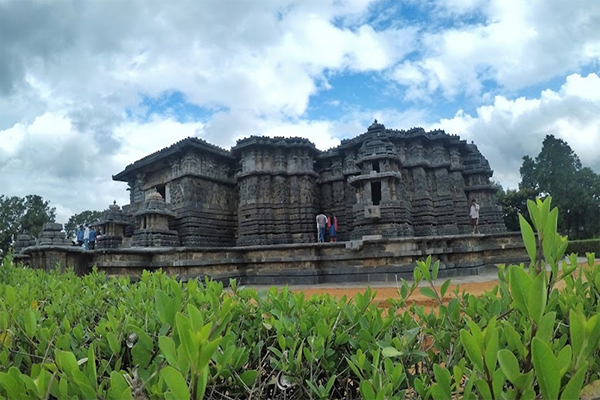
Hoysaleswara Temple is one of the best heritage temples in India. The temple is a brilliant example of the architecture of the Hoysala Empire. Hoysaleswara Temple is also called Halebid Temple. King Vishnuvardhana of the Hoysala Empire built the temple during the 12th century. The Hoysaleswara Temple is a temple complex consisting of two temples. One temple is that of Lord Hoysaleswara and the other is of Santaleswara.
Hoysaleswara Temple was probably one of the largest Shiva temples that were built by the Hoysala Empire during their reign. The temple is an architectural gem. The main temples are constructed on a raised platform base with thick walls. The sculptures and delicate carvings on the walls are those of birds, animals, deities, and sages. Scenes from the Ramayana, Mahabharata, and Bhagavad Gita can be found on the doorways and walls. The pillars, ceiling, walls, and doorways have also been sculpted with great precision. The inscriptions on the walls are a reflection of the life and culture that existed during the 12th century. Hoysaleswara Temple is ranked among the best UNESCO World Heritage Sites in India.
- Festivals: Hoysala Mahotsav
- Best time to visit: October to March
- Timings: 6.30 am to 9 pm
19. Chengannur Mahadeva Temple, Chengannur

In the town of Chengannur, the Chengannur Mahadeva Temple is among the oldest Shiva temples in Kerala. The temple is also called Bhagavathy Temple. Bhagavathy, who is considered to be a divine incarnation of Sati, is also worshipped in this temple. According to a popular legend, Bhagavathi came here after marrying Lord Shiva in the Himalayas. But soon as she came, her menstruation cycle began. Even today, the temple celebrates a unique menstruation festival where the temple is closed for three days.
Chengannur Mahadeva Temple ranks among the most sacred temples in Kerala. The gopurams or temple towers, gateways, inner sanctums, and halls, all have been built with Kerala-style architecture. The shiv linga in the temple has the form of Ardhanareeswara and is believed to be a Swayambhu shiv linga (originated on its own). There are shrines of other deities also. The temple is also considered to be one of the 108 Shakti Peeths of Parvathy. There are mural paintings and fabulous woodwork in the temple. The temple celebrates some unique festivals. Poojas are performed regularly at the temple. The religious festivals are very popular among the locals. The temple is also famous for its tantric practices.
- Festivals: Thiruppooth Aratt, Thripputhu, Varshikotsavam, Shivratri, Thulasamkrama Neyyattu
- Special Pujas: Panthiradi Pooja, Shiva Abhishekam, Ravile Palli Unarthal, Deeparadhana
- Best time to visit: September to February
- Darshan timings: 4.30 am to 11.30 am, 5 pm to 8 pm.
20. Ekambareswarar Temple, Kanchipuram
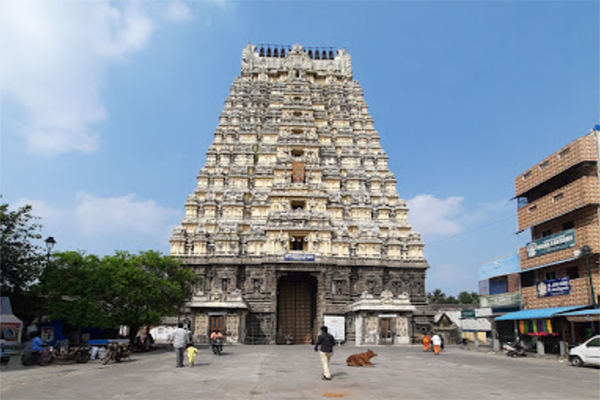
Kanchipuram is famed for its temples, and one of the most elegant among them is the Ekambareswarar Temple. The most famous thing about this temple is its gopurams or temple towers, which are considered to be among the tallest in India. Lord Shiva is worshipped in the form of Lord Ekambareswarar. The temple is one of the Pancha Bhoota Stalas, and Lord Shiva is manifested here in the form of the natural element earth. It is one of the most illustrious temples of the Chola dynasty. The temple is one of the 275 temples that form the Paadal Petra Sthalam.
This temple complex is very big and ranks in the list of the biggest temple complexes in India. There are many legends associated with this temple. According to one, Parvati worshipped a lingam made of sand at the place. The temple is among the oldest temples in India, and records mention that it existed in 600 CE. The hallways, mandapams (halls), gopurams (temple towers), sculpted pillars, idols, courtyards, and corridors are amazing pieces of architecture. There is a mango tree in the temple complex which is said to be 3,500 years old and it yields four different types of mangoes. The temple celebrates several festivals during the entire year. The temple priests perform pujas daily and they perform elaborate religious rituals.
- Festivals: Panguni Brahmotsavam, Ani Tirumanjanam, Adi Kritikai, Avani Moolam, Navaratri, Kartika Deepam, Thai Poosam, Chitra Pournami, Vaikashi Vishakam
- Darshan timings: 6 am to 12.30 pm, 4 pm to 8.30 pm
- Special puja: UshadKalam, Kaalasanthi, Uchi Kaalam, Pradosham, Sayarakshai, Ardhajamam
- Best time to visit: March, April
21. Murugeshpalya Shiva Temple, Bengaluru
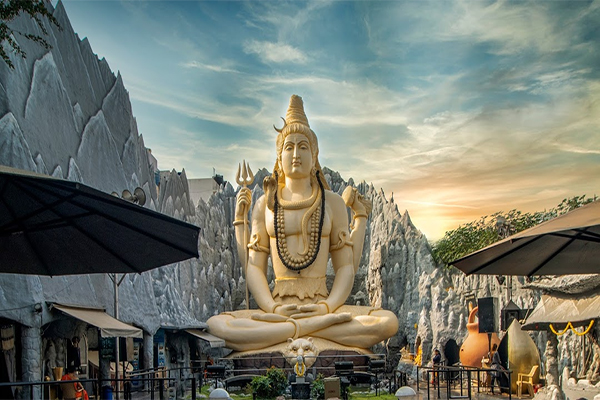
The Murugeshpalya Shiva Temple in Bengaluru was built in 1995 and is one of the most popular Shiva temples in Bengaluru. The temple is also very popular as the Kempfort Shiva Temple and Shivoham Shiva Temple. The Shiva idol in the temple is 65 feet tall and is in a sitting posture. The amazing thing about this idol is that its sculptor who was called Kashinath sculpted this idol without any measuring tools or any blueprint.
Sri Shankaracharya of Sringeri consecrates this temple. Along with the Shiva statue, there is also a statue of Lord Ganesha. The temple has recreated the epic Hindu pilgrimage routes with spectacular details. Amarnath Yatra, Char Dham Yatra, and 12 Jyotirlinga temples are shown with their respective natural surroundings and landscapes. Devotees can even go through a cave and a mountain when they visit the Amarnath Paanch Dhaam Yatra at this temple. The replica shows Himalayan mountains and icy peaks and there is even a replica of the ice shiv linga. During Maha Shivratri, a laser light show is shown and there are great festivities and other events at the temple. Devotees can also shop for devotional and puja items, crafts, and bhajan CDs from the shop.- Festivals: Mahashivratri
- Best time to visit: October to March
- Darshan timings: 24 hours
- Special Puja: Shiv Aarti, Somvaar ka Tyohar

